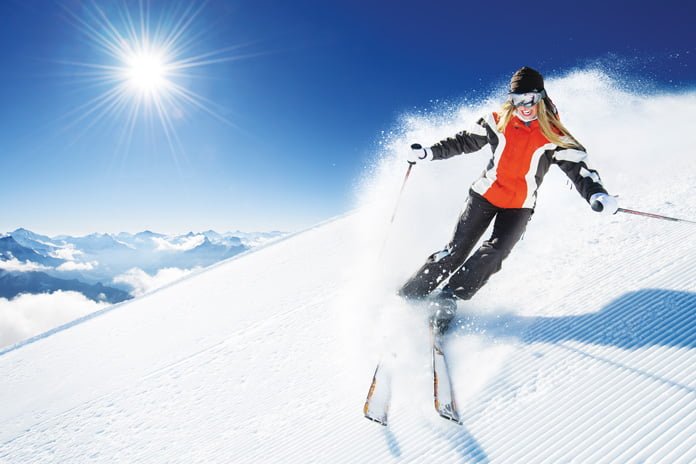- Sponsored Content

As Europe and Japan’s winter sports season fast approaches, it’s time to get yourself into shape for the unique physical and mental challenges that skiing and snowboarding bring. There are many ways you can ensure your body and mind are at their best so you can enjoy your holiday in the snow with minimal risk of injury. Read on.
How can I get in shape?
Ideally, start upping your fitness no less than six weeks before your trip. There are several key areas to work on to ensure peak performance on the slopes:
- Cardio for overall fitness and endurance
- Core strength for balance and coordination
- Quads, glutes and hamstring strength for control
If you work on these areas, not only will you feel fitter, stronger, and enjoy your skiing and snowboarding sessions more, but they’ll all work together to reduce your risk of injury.
If you’ve hurt yourself and are returning to sports, your physiotherapist can confirm that you’re ready to get back at it by carrying out an objective assessment. They can also share advice on specific things you can do to minimise further injury when returning to sport.
Other pre-sport prep prior to your winter holiday include warming up, skiing on piste and to your ability, not skiing or snowboarding when you’re tired, and avoiding the consumption of alcohol during skiing as it can cause dehydration and affect your coordination.
Minimise harm
Of course, occasionally we do injure ourselves on the slopes. Musculoskeletal (muscle, ligament, tendon, bone and joint) issues are the most common during winter sports. The injury profile changes depending on your level of experience, whether you’ve had lessons from a professional instructor, and your overall fitness.
Beginners are at the highest risk of injury (no matter what age you are), therefore a snow sports-specific pre-holiday fitness programme, professional snow sport instruction, learning ski lift safety, and getting properly educated about high-risk areas on the slopes is essential to minimise potential harm.
Fortunately, with improving equipment and in particular ski boot bindings, the overall rates of injury have decreased over the last 20 years.
Knees are the most commonly injured joint, accounting for almost 30% of all injuries. Shoulder and wrist damage is also prevalent. Snowboarders experience more hip, trunk, and head accidents, while skiers commonly injure their knees and shoulders. This is due to the different equipment, position and twisting forces experienced when you fall.
Knee ligaments are often harmed due to the twisting nature of many ski accidents, especially the Anterior Cruciate Ligament (ACL) and the Medial Collateral Ligament (MCL). Meniscus damage can also be encountered in association with these ligament injuries.
What if I hurt myself?
Fortunately, most injuries are minor and can be managed with a few days of rest, ice, and simple painkillers. If the injury is more severe, you struggle to bear weight or move the joint, then please seek medical support.
Many ski resorts have clinics where you can have an initial assessment and get good advice for staying safe. If you’re having ongoing injury issues upon returning home, book an assessment with an experienced Orthopaedic Surgeon who can care for you and help you to recover fully.

Dr Gavin O’Neill is an Orthopaedic Surgeon specialising in hip and knee conditions. He trained in the UK and Australia. If you’re having issues with hip or knee pain contact us at Altius Clinic, Sports and Orthopaedic Surgeons for an appointment. altiusclinic.sg
 Altius Clinic Sports and Orthopaedic Surgeons
Altius Clinic Sports and Orthopaedic Surgeons
290 Orchard Road, #09-11/12 Paragon, 238859
contact@altiusclinic.sg
+65 8500 3961 +65 6970 1518








